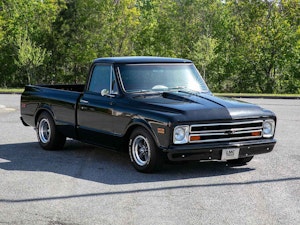Media | Articles
Why Canada bought a-Lada Soviet lemons
I expected Uzbeki slaves manacled to workstations, slowly chipping cars out of pig iron. That’s how their products drove. But there were no dull chisels, no malnourished workers.
None. In 1986, Lada’s Tolyatti, Russia, factory utilized Kawasaki Unimate robots, up and down the assembly line. Hitachi Zosen transfer presses, the same as those found in Mazda’s Hiroshima plant were there too. So were state-of-the-art paint systems. The best car-building technology the world had to offer.
And the cars were junk.
There were two possible explanations for this. Perhaps the Soviet workers had never seen a Honda Civic, so they had no idea what the quality target was. Or, the workers knew they would never own one of the their products – their Ladas were all destined for export – so assembly was haphazard.
From 1979 until 1998, one of those export markets was Canada. And despite the northern climate, the Cold War wasn’t quite as chilly in Canada.
Marketplace
Buy and sell classics with confidence
Call it Russia’s revenge.
Fiat set up the Tolyatti plant and named it after an Italian Communist party leader (Palmiro Togliatti). The city on the Volga River, where the plant is located, is essentially a company town.
In the 1980s, the factory was claimed to be the world’s largest car plant under one roof, and one of the most integrated. Steel came in one end, cars more-or-less out the other. Apart from glass, rubber and fabric, everything else was made in-house.
The Lada Signet was essentially a Fiat 124 sedan with all the Italian verve supplanted by Soviet sludge. I owned a 124, and it was fun to drive. The Signet? Not so much.
Noisy, slow, unreliable, tacky, plasticky – it was just plain nasty. But because the Signet cost less than $5,000 Canadian at the time, a good 25 percent cheaper than any other new car, it sold remarkably well.
But it was not always well received. Ladas were prohibited from parking at some businesses, which resulted in increased Fiat-badge theft (read: more than zero per year).
Later, Lada added a four-wheel drive, two-door subcompact called the Niva, allegedly styled by Giugiaro. It was actually quite capable off-road, but extremely agricultural anywhere else. Appropriately enough, Niva means “farm field” in Russian.
An all-new front-drive Lada, named Samara, after a Volga tributary, debuted in the USSR in late ‘84, and in Canada two short years later.
Eventually, the Hyundai Pony’s arrival – hardly an all-star, but a Rolls-Royce in comparison – killed Lada in Canada.
Is there a collector following in Canada for Ladas? Bringatrailer.com and Craigslist will occasionally fetch up a Signet, Samara or Niva. But for the most part, these testimonials to the Communist economic system’s strength are gone and, with a bit of luck and some vodka, forgotten.











“Hyundai Pony’s arrival – hardly an all-star, but a Rolls-Royce in comparison – killed Lada in Canada.”
The Pony was 10 years behind in design. Lada was not a bad car at all and if it was “junk” then pretty much all of the american cars were junk too.